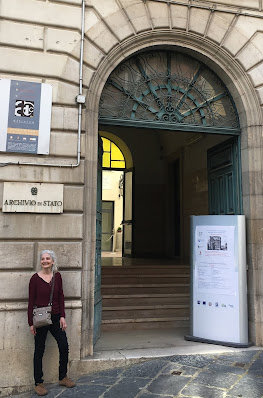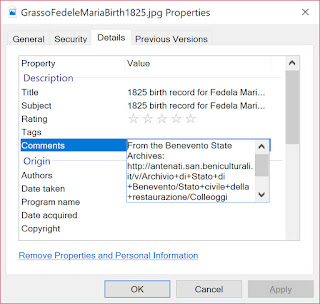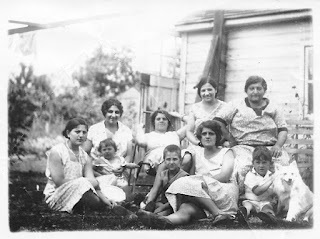In my last article I discussed 3 of the 6 building blocks that form my genealogy philosophy. They can be the solid foundation to your strong family tree. Let's continue.
4. Keep at it Regularly
The best thing I ever did for my family tree research is start this blog. To publish twice a week, I have to be active. Researching, exploring new websites, and collaborating with others. And I do that nearly every day.
That strict schedule is resulting in tons of new discoveries. It seems like every couple of weeks I find a new set of 5th or 6th great grandparents!
Do whatever you can to keep a hand in your research each week. That continuity will help you focus and accomplish more.
 |
| One ecstatic genealogist at the archives in Italy. |
5. Be as Organized as Possible
In my early days, I grabbed census documents, attached them to the head of household and moved on. After a while I had a mess on my hands! I couldn't retrace my steps to find that census sheet again. I didn't cite my source. And I still needed to add the image and the facts to everyone else in the household.
Now I've gotten into an efficient routine. I follow the same steps to make sure I record and document each image and fact thoroughly.
 |
| Right-click and choose Properties. Click the Details tab. Enter specifics for your genealogy image. |
- I crop and enhance it in Photoshop
- I add a title and source citation to the image's properties before dragging it into my family tree. I have a format I follow that ends with the URL where I found the image.
- I edit the date of the document in Family Tree Maker. I give it a category and make it the person's profile image if I don't have their photo.
- Let's say it's a marriage document. I add the image to one spouse, then share it so it's attached to the other spouse, too.
- I make note of the document in my Document Tracker. This spreadsheet shows me at a glance which documents I have (and don't have) for anyone in my family tree.
Because I made it a routine, I'm now frighteningly organized. No more doubling back to try to fix my messes.
6. Create an Inventory
This final building block applies to cuckoo-birds like me who've downloaded large document collections from FamilySearch or the Italian Antenati website.
I know it will take YEARS, but I'm filling several spreadsheet pages with the facts I transcribe from those thousands of Italian vital records. It seems daunting, but being able to easily search for a particular person in a span of years is awesome.
I've completely documented 6 years of birth records from my paternal grandfather's hometown and a smaller selection from the other towns. I want to own this complete collection, and I look forward to sharing it with my fellow descendants of these towns.
What if you inventoried the vital records, censuses, ship manifests and other images stored on your computer? How might that simplify your future searches?
When I started writing this blog, I began thinking of my genealogy research like a job (the best job ever!). I wanted to apply all the best practices of the genealogy industry to my research.
These 6 building blocks are making my family tree world class. How about you?
















